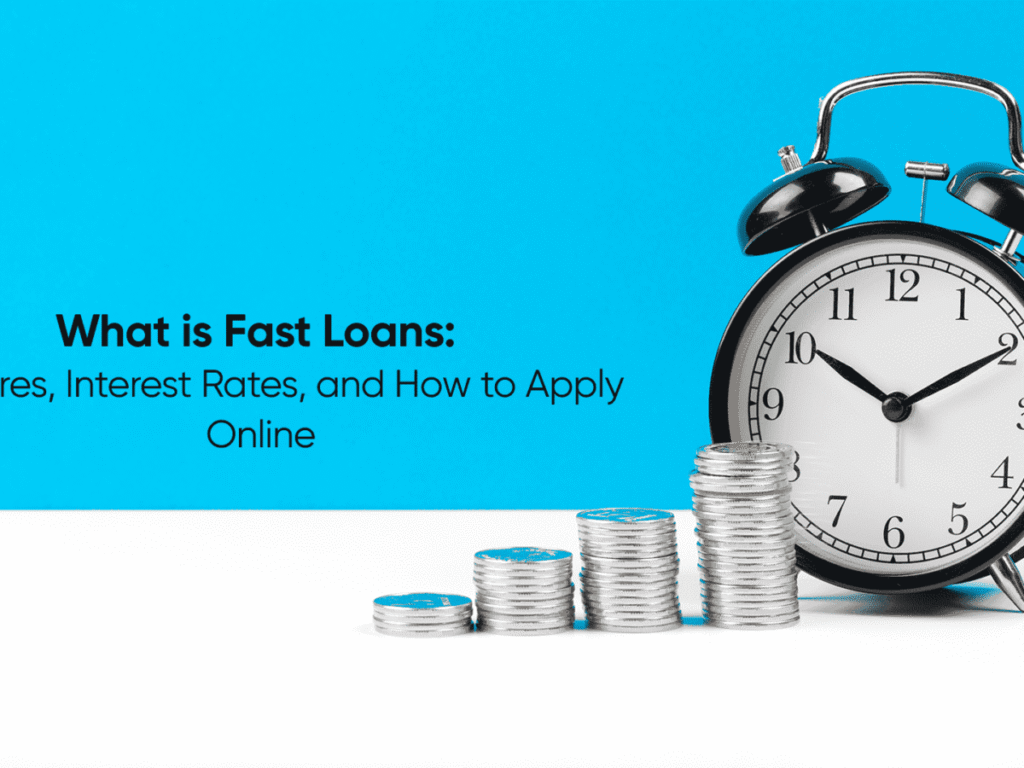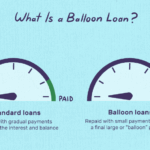In today’s fast-paced world, financial emergencies often require quick solutions. Fast loans have become a popular option for many people needing immediate cash. But the question remains: Are fast loans safe or risky? This article dives deep into the nature of fast loans, how they work, their benefits, potential dangers, and tips for making informed decisions.
Key Takeaways
- Fast loans provide rapid access to cash but often at high costs.
- Safety depends on lender legitimacy and borrower responsibility.
- Carefully review terms, interest rates, and fees before borrowing.
- Consider alternatives to avoid debt cycles.
- Use fast loans only for genuine emergencies with a clear repayment plan.
- Understand your local laws and lender credentials.
- loans are tools — when used wisely, they can help; when misused, they can cause financial harm.
Understanding Fast Loans
Fast loans are short-term borrowing options designed to provide quick access to cash, often within hours or days. Unlike traditional loans, which may involve lengthy approval processes and extensive paperwork, loans prioritize speed and convenience.
They come in various forms, including payday loans, online personal loans, installment loans, and title loans. Typically, fast loans have smaller amounts and shorter repayment periods than conventional loans, catering to urgent financial needs.
The appeal of loans is obvious — immediate access to funds without the hassle of long credit checks or complicated approvals. But with this convenience, there are risks that borrowers need to understand.
What Are Fast Loans?

Fast loans are short-term financial products designed to deliver funds quickly, often within hours or a single business day. Unlike traditional loans, which can take days or weeks for approval and disbursement, loans prioritize speed and ease of access. The hallmark of loans is their rapid processing—both in application and funding.
Most loans are applied for online or through mobile apps, with some lenders promising approval in minutes. This convenience makes them particularly appealing to borrowers facing time-sensitive financial situations.
Key Features of Fast Loans
To fully grasp how loans function, it’s important to understand their typical characteristics:
- Speed of Approval and Disbursement: Approval can occur within minutes to a few hours, and funds are often transferred the same day.
- Short Loan Terms: Repayment periods are usually brief—often two weeks to a few months.
- Smaller Loan Amounts: Loan amounts typically range from $100 to a few thousand dollars, depending on the lender and borrower profile.
- Higher Interest Rates: To offset the risk of minimal underwriting, loans often come with higher interest rates and fees.
- Minimal Documentation: Most loans require only basic personal and financial information. Credit checks may be soft or bypassed entirely.
Types of Fast Loans
Understanding the different types of fast loans can help borrowers choose the option that best fits their needs:
Payday Loans
These are small, short-term loans meant to be repaid on your next payday. While they provide instant cash, payday loans are known for extremely high APRs—often exceeding 400% annually. Because of this, they are considered one of the riskiest forms of loans.
Online Personal Loans
These loans are available from online lenders who can process applications quickly. Unlike payday loans, personal loans may offer more manageable terms, lower interest rates (depending on credit), and repayment schedules of several months to years.
Title Loans
A title loan uses your vehicle title as collateral. While these loans can provide larger sums than payday loans, they carry the risk of losing your car if you fail to repay.
Installment Loans
Some loans are structured as installment loans, which are repaid over time in fixed monthly payments. These can be a more sustainable option for borrowers who need slightly longer repayment periods.
Cash Advances
Offered by credit card providers or employers, cash advances give borrowers quick access to cash. While convenient, they often come with steep fees and higher interest rates than regular credit card purchases.
The Role of Technology in Fast Loans
The rise of fintech (financial technology) companies has revolutionized the fast loan industry. AI-driven credit models, automated underwriting, and mobile app integrations have made it easier than ever to access loans anytime and anywhere.
This technological advancement enables lenders to evaluate applications quickly using alternative data—such as utility bill payments, employment history, and banking activity—rather than relying solely on traditional credit scores. As a result, fast loans have become more accessible to a wider demographic, including those with limited or poor credit histories.
Why Do People Turn to Fast Loans?
People seek loans for a variety of reasons, including:
- Unexpected emergencies: Medical expenses, urgent home repairs, or last-minute travel.
- Cash flow gaps: Covering rent, utility bills, or groceries before the next paycheck arrives.
- Credit challenges: Borrowers with poor or no credit history may not qualify for traditional loans, making loans an accessible alternative.
- Convenience: loans can often be applied for entirely online, with no in-person meetings or extensive paperwork.
The Psychological Appeal of Fast Loans
Fast loans also tap into the psychology of instant gratification. The promise of solving a pressing financial issue immediately—without having to wait or explain—is powerful. This emotional appeal can override rational assessment of loan terms and repayment ability, which is why education is crucial.
Who Offers Fast Loans?
loans are offered by various financial institutions, including:
- Online lenders: Specialized in quick, digital-first services.
- Credit unions and banks: Some traditional institutions now offer expedited loan products.
- Payday loan stores: Still prevalent in many areas, though often subject to strict regulations.
- Peer-to-peer platforms: These allow individuals to borrow directly from other individuals, often with faster turnaround times.
Responsible Borrowing and Fast Loans
Understanding how fast loans work is only part of the equation. Responsible borrowing is key. Borrowers should:
- Read the terms and conditions carefully.
- Understand the total cost of the loan, including interest and fees.
- Have a clear plan for repayment.
- Avoid using loans for recurring expenses or long-term financial gaps.
loans are not a substitute for sound financial planning but can serve as a short-term bridge in the right context.
How Fast Loans Work
Fast loans often require minimal documentation and quick online or in-person application processes. Borrowers provide basic information such as income, employment status, and identification, and lenders assess the risk swiftly, sometimes relying on automated systems.
Once approved, the money is deposited directly into the borrower’s bank account, often within 24 hours. The speed is the primary selling point, making loans an attractive option for those facing unexpected expenses, such as medical bills, car repairs, or urgent travel.
However, loans tend to carry higher interest rates and fees compared to traditional loans. Lenders charge these premiums to offset the increased risk of lending with limited verification and the short-term nature of the loan.
Benefits of Fast Loans
When unexpected financial situations arise, having access to funds quickly can be crucial. Fast loans offer a range of benefits that make them an attractive solution for borrowers in urgent need of cash. While they should be used responsibly, understanding the advantages of fast loans can help borrowers make informed decisions.
Fast loans are not just about speed—they also offer convenience, flexibility, and access to individuals who may not qualify for traditional bank loans. Below, we explore the main benefits of fast loans and compare them in an easy-to-read table.
Key Benefits of Fast Loans
Quick Access to Cash
One of the biggest benefits of loans is the speed at which funds are approved and disbursed. Many lenders can approve applications within minutes and transfer money to your account within 24 hours—or even the same day.
Simple Application Process
Most fast loan providers offer an easy online application process that takes just a few minutes. There’s often no need for in-person meetings, physical paperwork, or long waiting periods.
Minimal Eligibility Requirements
loans are known for their lenient qualification criteria. Even individuals with poor or limited credit history may be eligible, making fast loans accessible to a wide range of borrowers.
No Collateral Required
Many fast loans are unsecured, meaning you don’t have to risk your assets—like a car or home—to qualify. This makes them safer in terms of asset protection, especially for small loan amounts.
Flexible Usage
Unlike some traditional loans that are earmarked for specific uses (like auto or home loans), fast loans can be used for virtually anything—medical expenses, rent, bills, emergency travel, or unexpected repairs.
Availability 24/7
Online lenders offer services 24/7, so you can apply for a fast loan any time, even outside business hours. This round-the-clock availability is a major plus during financial emergencies.
Short-Term Financial Solution
Fast loans serve as a temporary financial bridge. If you’re between paychecks or facing a one-time emergency, they can provide immediate relief without requiring long-term debt commitments.
Improved Access through Technology
Thanks to fintech innovation, borrowers can access loans through mobile apps or websites, often with real-time application tracking, electronic signatures, and instant notifications.
Table: Overview of Fast Loan Benefits
| Benefit | Description |
|---|---|
| Quick Disbursement | Funds can be available within hours or the same day |
| Easy Online Application | No lengthy paperwork; applications take minutes |
| Minimal Requirements | Credit score not always a barrier; many lenders accept low or no credit |
| No Collateral Needed | Most fast loans are unsecured and don’t require personal assets as security |
| Flexible Use of Funds | Use for any personal need—bills, emergencies, or shortfalls |
| 24/7 Availability | Apply at any time, even on weekends or holidays |
| Short-Term Relief | Helps manage temporary financial gaps or one-time expenses |
| Digital Convenience | Apply, track, and manage your loan from your phone or laptop |
When These Benefits Matter Most
The benefits of fast loans become especially important in scenarios like:
- Sudden medical emergencies with upfront costs
- Last-minute travel for family or work
- Unexpected home or car repairs
- Covering essential bills to avoid late fees or utility shutoffs
- Bridging income gaps between jobs or paychecks
However, even with all these advantages, it’s critical to assess your ability to repay before taking out a fast loan. While they offer convenience and speed, loans should be part of a well-thought-out financial strategy—not a habit.
Risks and Downsides of Fast Loans
Despite their advantages, fast loans carry notable risks:
- High interest rates and fees: To compensate for the rapid lending and risk, interest rates on fast loans can be extremely high, sometimes reaching triple digits on an annual percentage rate (APR).
- Short repayment periods: Many fast loans demand repayment within a few weeks, making it challenging for borrowers to repay on time.
- Debt cycle risk: Due to high costs and short terms, borrowers who can’t repay may roll over loans or take new fast loans, trapping themselves in a debt cycle.
- Predatory lending: Some lenders exploit borrowers with misleading terms, hidden fees, or aggressive collection tactics.
- Impact on credit score: Missing payments or defaulting on fast loans can harm credit scores, limiting future borrowing options.
Are Fast Loans Safe?
Whether fast loans are safe depends on the lender and borrower behavior. When sourced from reputable, licensed lenders and used responsibly, fast loans can be a useful financial tool for emergencies.
However, if borrowers take loans without fully understanding the terms or from unscrupulous lenders, the risks can outweigh the benefits.
How to Identify Safe Fast Loans
To ensure safety when considering loans, keep these tips in mind:
- Check lender licensing: Ensure the lender is licensed in your state or country and follows relevant financial regulations.
- Read all terms: Scrutinize interest rates, fees, repayment schedules, and penalties.
- Avoid upfront fees: Legitimate lenders usually don’t charge fees before approving the loan.
- Compare offers: Don’t settle for the first fast loan offer; shop around to find better terms.
- Beware of scams: Avoid lenders who pressure you to act immediately or request unusual personal information.
- Understand your ability to repay: Only borrow what you can repay comfortably to avoid the debt cycle.
Alternatives to Fast Loans
Before taking a fast loan, consider alternative options:
- Borrowing from friends or family: This can be interest-free and flexible.
- Personal savings: If possible, use your emergency fund.
- Credit cards: While interest rates can be high, credit cards often have longer repayment terms.
- Negotiating bills: Contact creditors to request extensions or payment plans.
- Community assistance programs: Some nonprofit organizations offer emergency financial aid.
Fast Loans and Credit Scores
loans can affect your credit score in multiple ways:
- Some lenders report repayment behavior to credit bureaus, which can build credit if you repay on time.
- Missing payments or defaulting will negatively impact your credit score.
- Fast loans often do not require a hard credit check, meaning they don’t always affect your credit score when applied for.
Understanding this dynamic helps borrowers manage their credit health while using loans.
Who Should Use Fast Loans?
Fast loans are generally suitable for people who:
- Need immediate cash for urgent expenses.
- Have a plan to repay quickly and can afford the high interest.
- Have limited access to traditional loans.
- Are aware of the risks and read the fine print.
They are not suitable for people who:
- Use them to cover ongoing expenses or chronic financial problems.
- Cannot repay on time and might end up rolling over loans.
- Are unaware of the loan terms or lender reputation.
The Legal Landscape of Fast Loans
Regulations surrounding fast loans vary by jurisdiction. Some states or countries have strict caps on interest rates and fees, while others allow more flexibility.
Borrowers should familiarize themselves with local laws and consumer protection agencies to ensure lenders operate legally.
Also Read : Is a Balloon Loan a Smart Financial Move?
Conclusion
Fast loans are a double-edged sword — they provide quick access to cash when you need it most but carry inherent risks due to high costs and short repayment terms. Whether loans are safe or risky largely depends on the lender’s legitimacy, the borrower’s understanding of loan terms, and responsible borrowing behavior.
By educating yourself, comparing options, and considering alternatives, you can make an informed decision that fits your financial situation. Remember, loans can be a helpful tool when used wisely, but they are not a long-term financial solution.
FAQs
What are fast loans?
Fast loans are short-term loans designed to provide quick access to money, often within 24 hours or less, with minimal paperwork.
Are fast loans legal?
Yes, fast loans are legal in many regions, but regulations vary widely. Always verify the lender’s licensing and adherence to local laws.
Can fast loans hurt my credit score?
Repaying fast loans on time can build credit, but missing payments or defaulting can damage your credit score.
How much do fast loans cost?
Fast loans usually have higher interest rates and fees than traditional loans, reflecting the increased risk and convenience.
Can I get a fast loan with bad credit?
Many fast loan lenders approve borrowers with poor credit, but this often comes with higher interest rates and stricter repayment terms.
Are there alternatives to fast loans?
Yes, alternatives include borrowing from family or friends, using credit cards, negotiating bills, or seeking community aid.
What happens if I can’t repay a fast loan on time?
Failure to repay can lead to late fees, increased interest, negative credit impact, and in some cases, debt collection actions.


